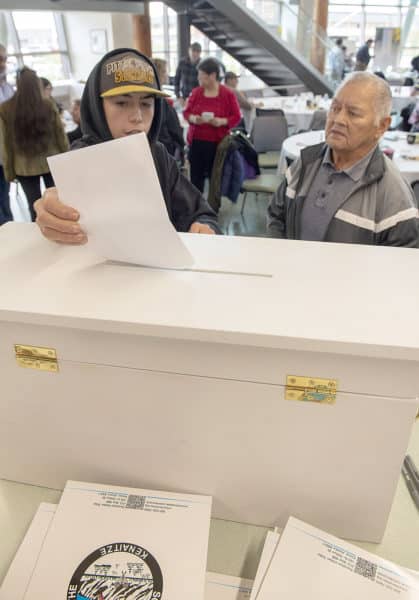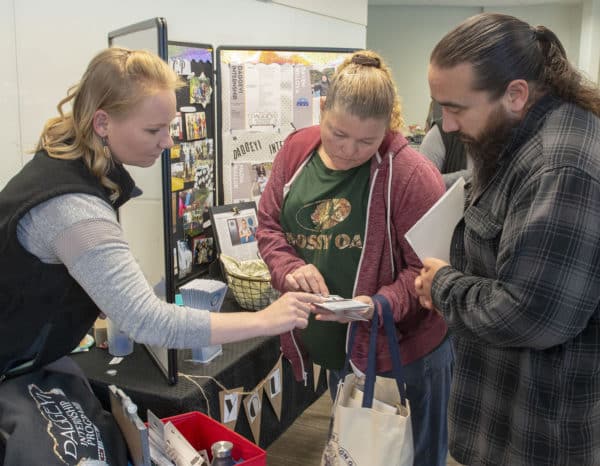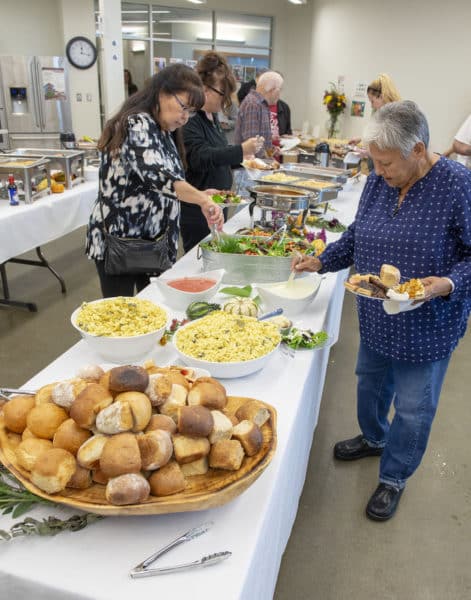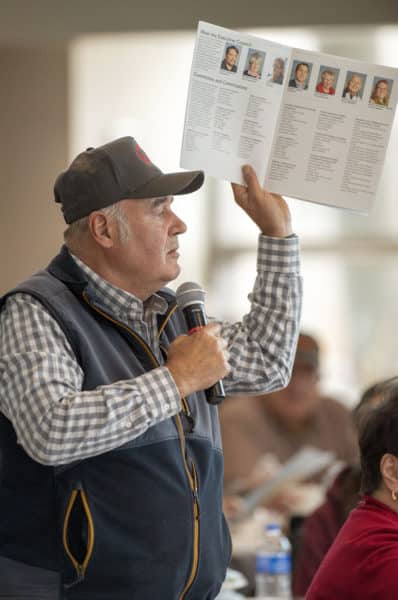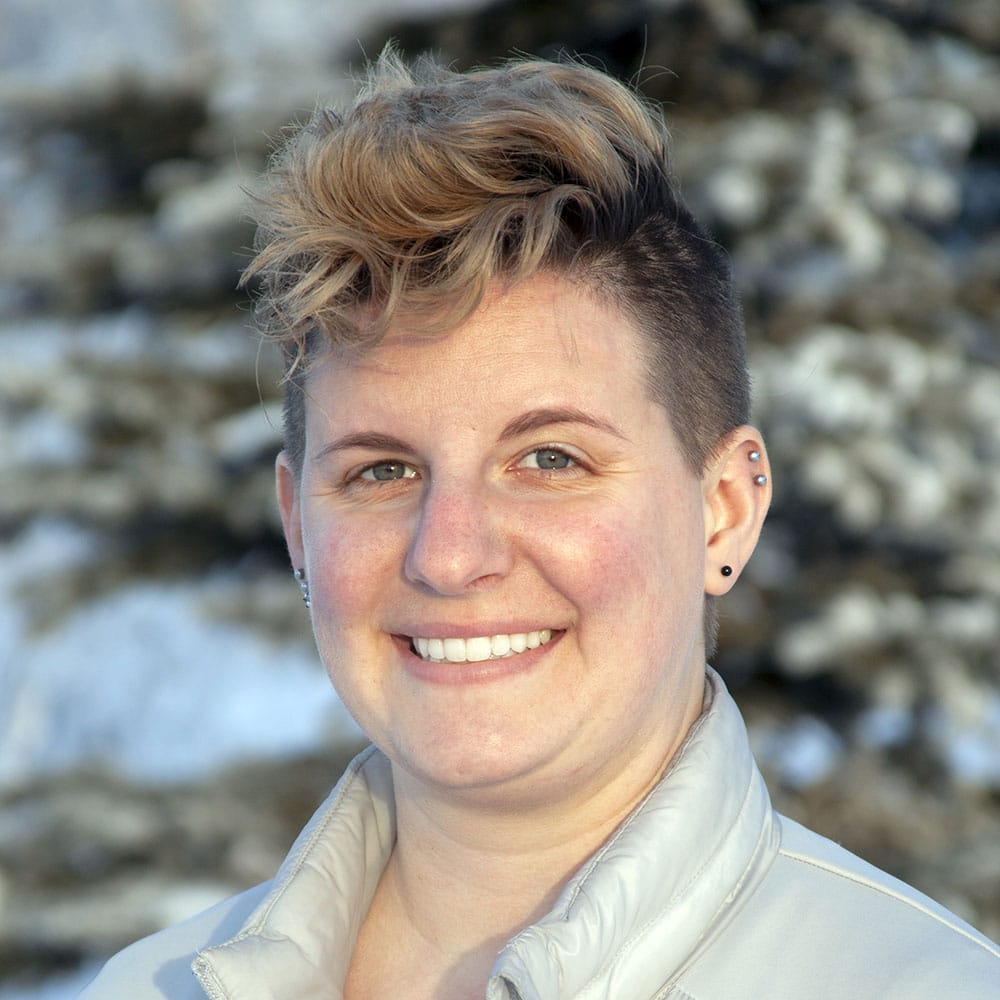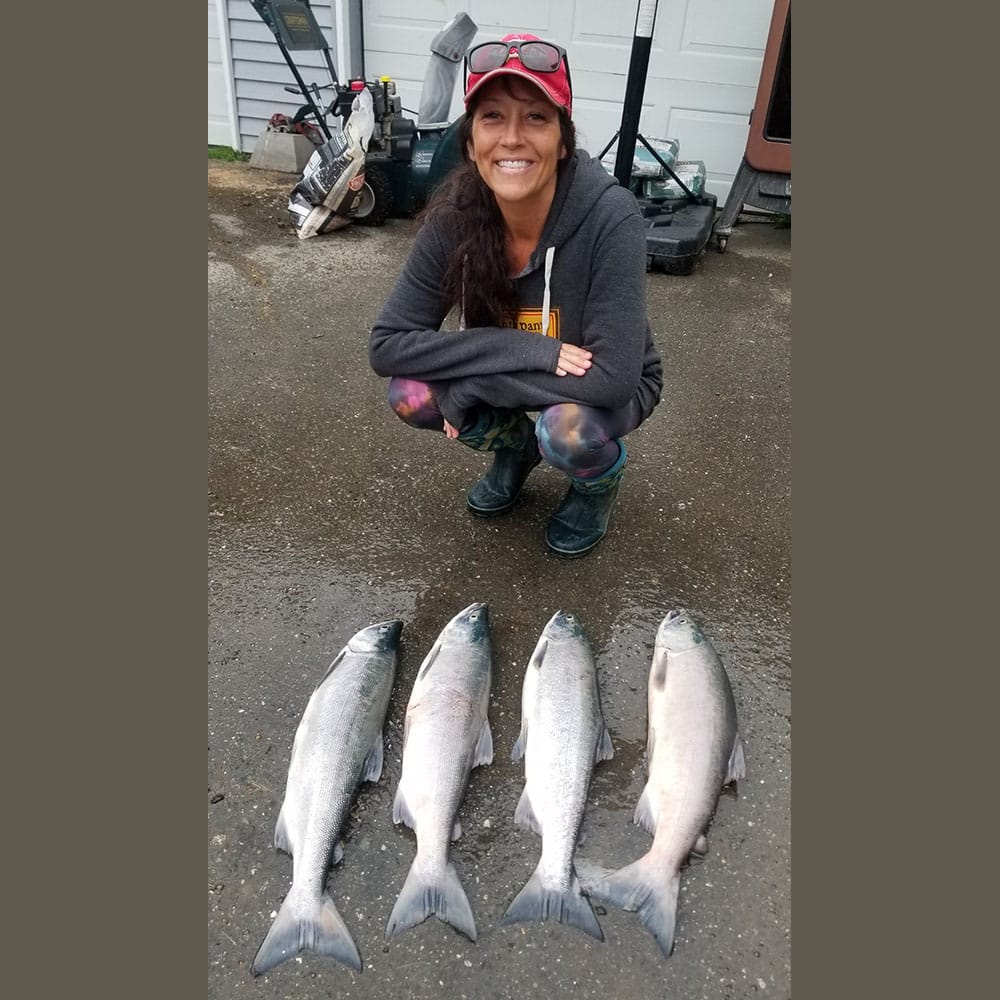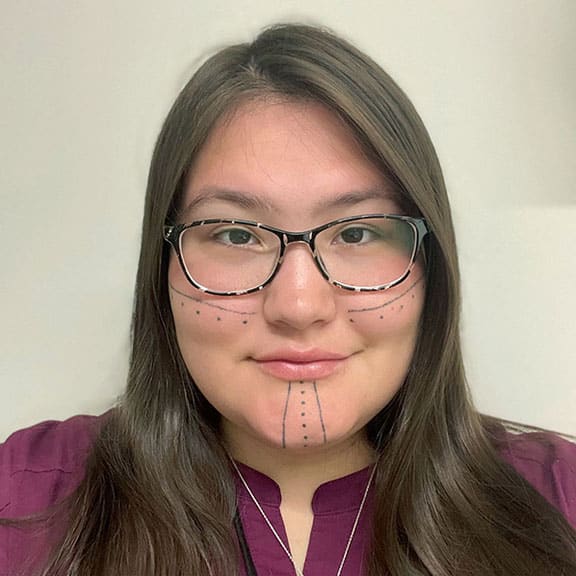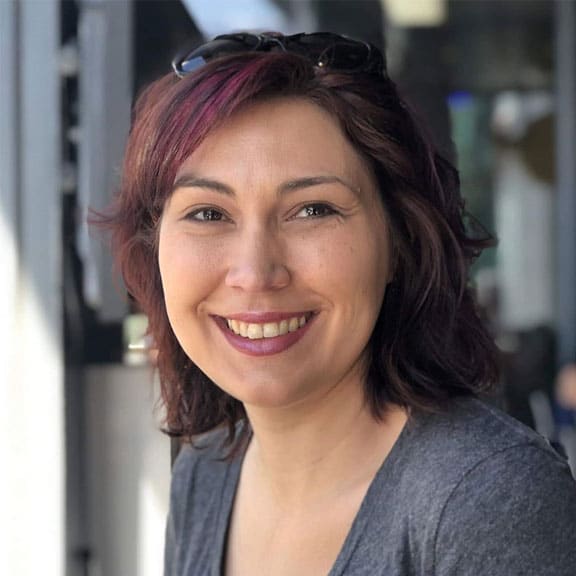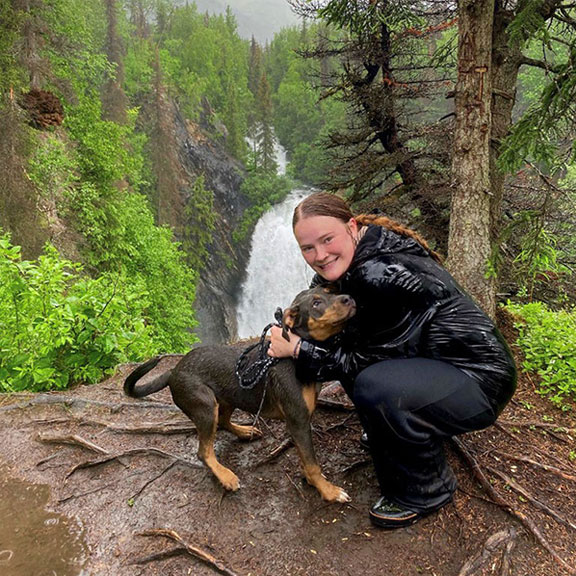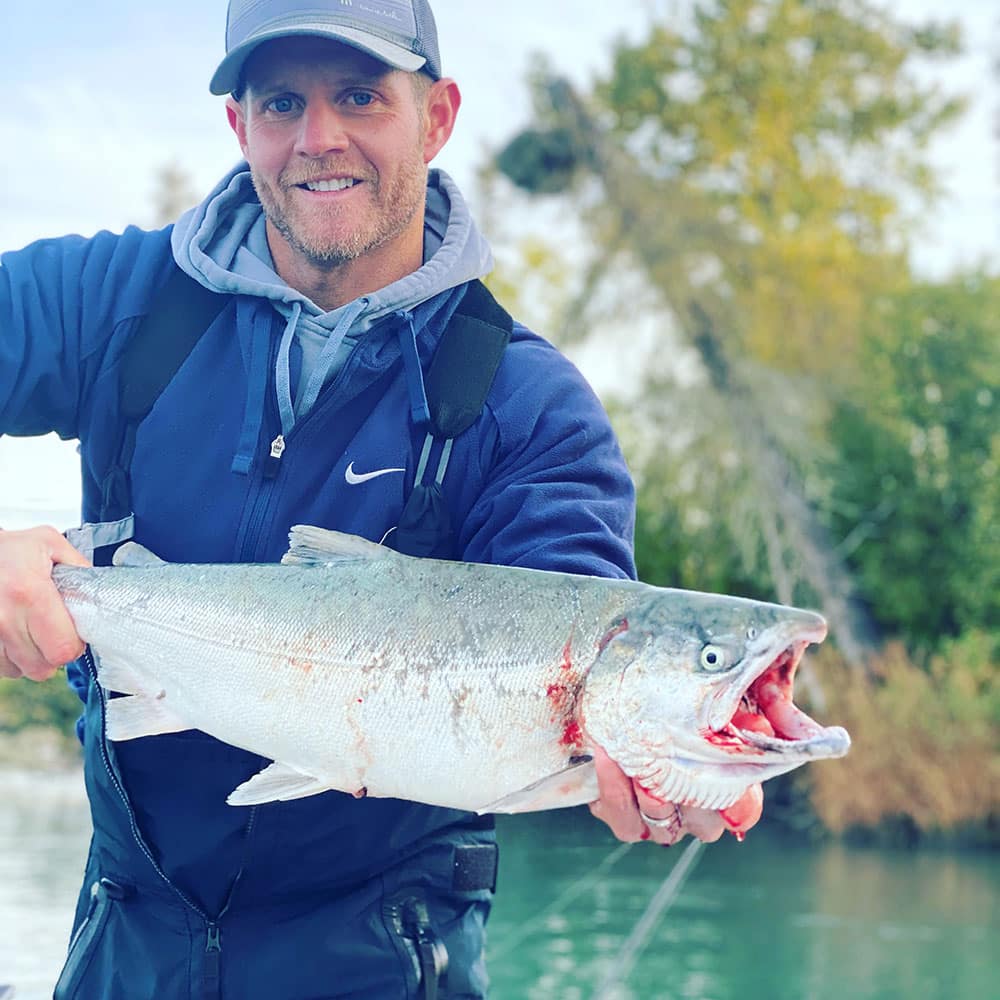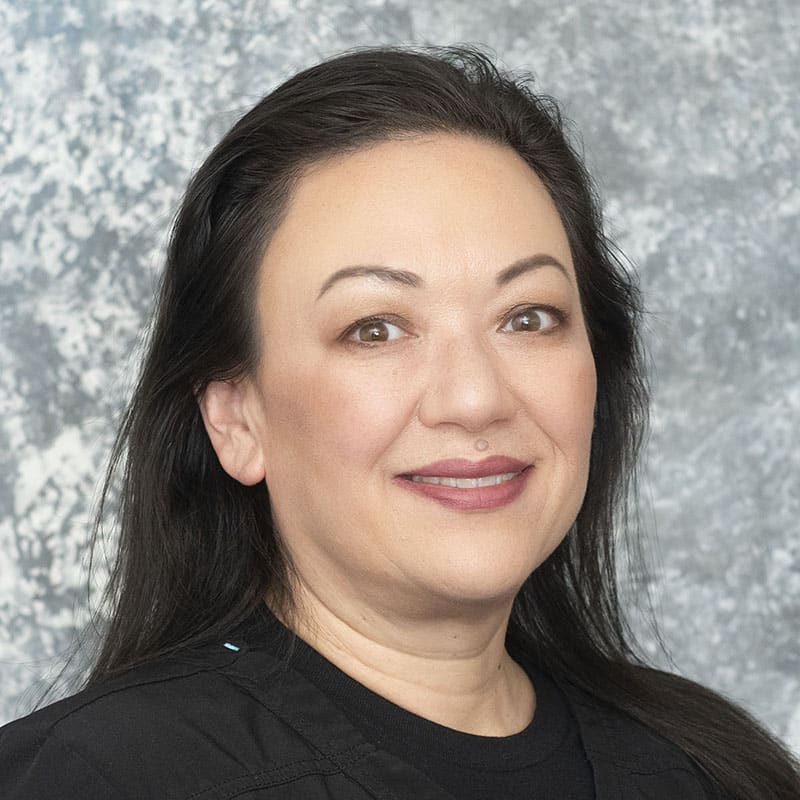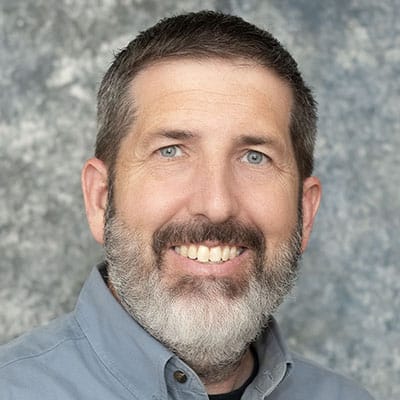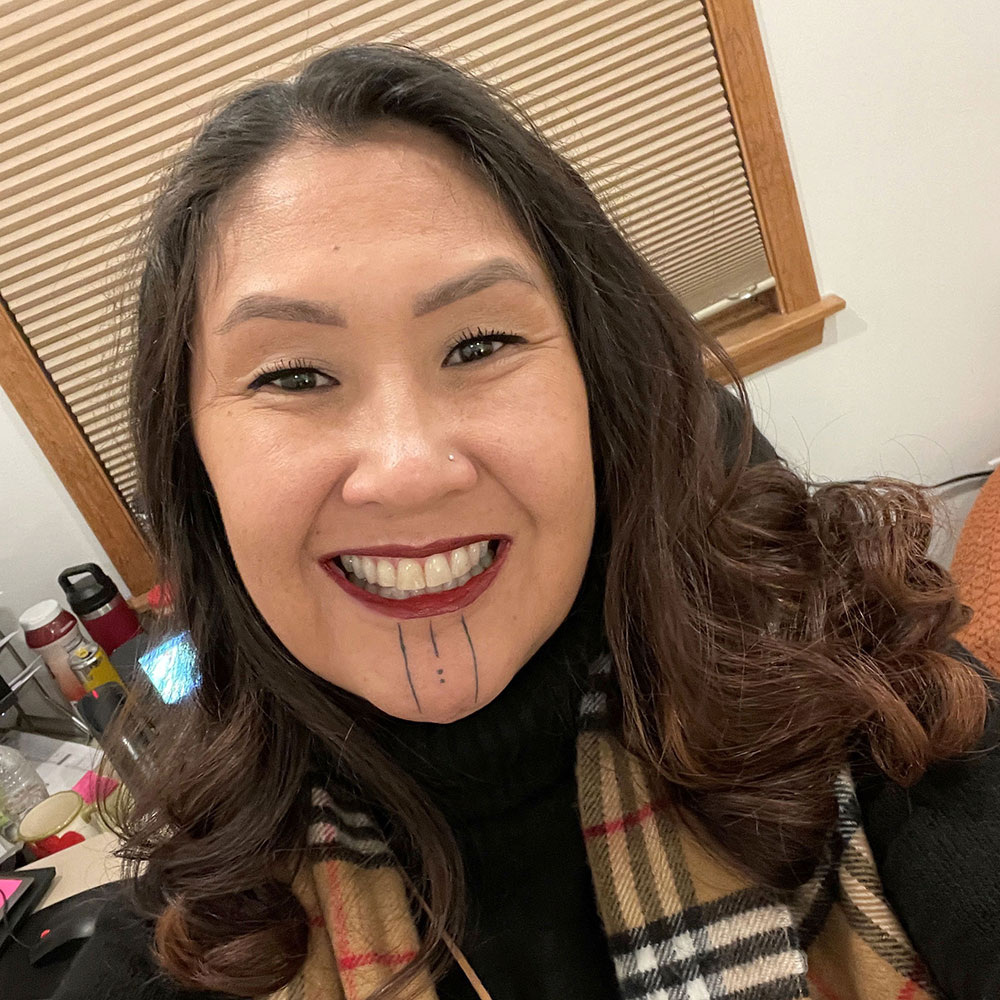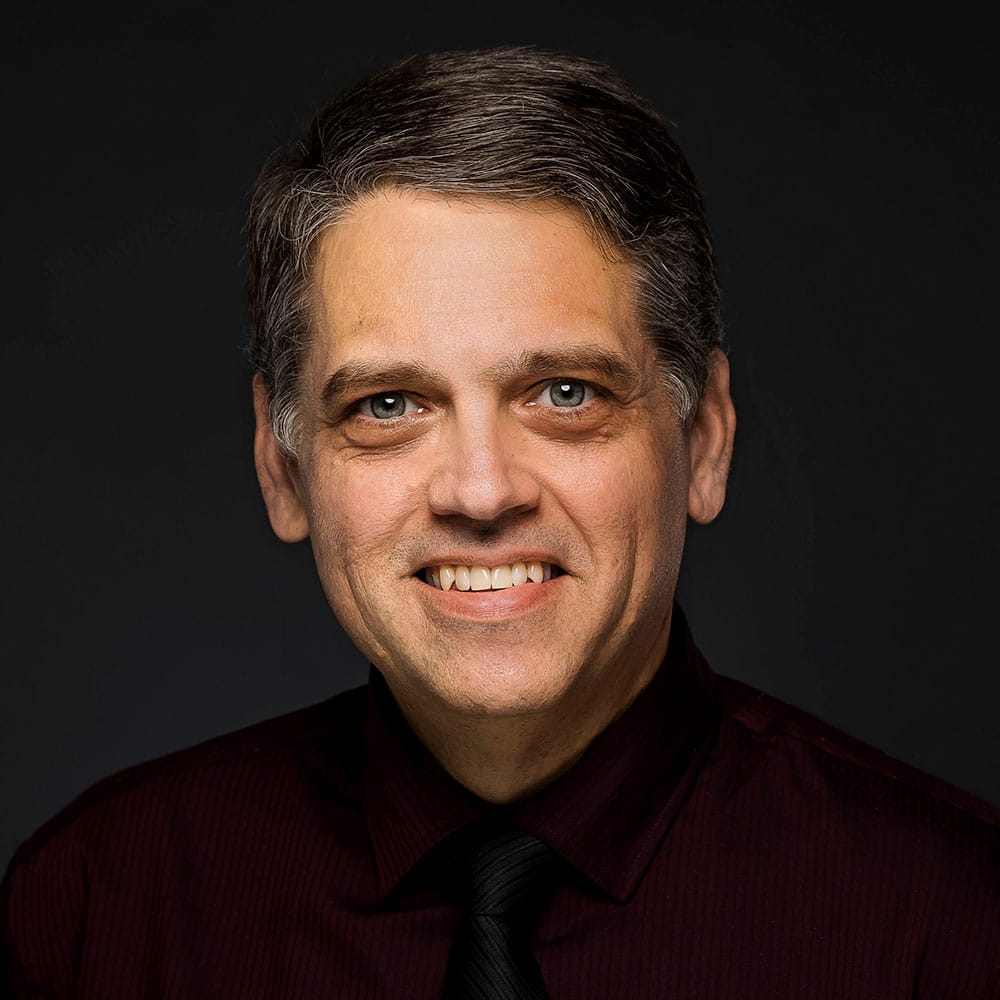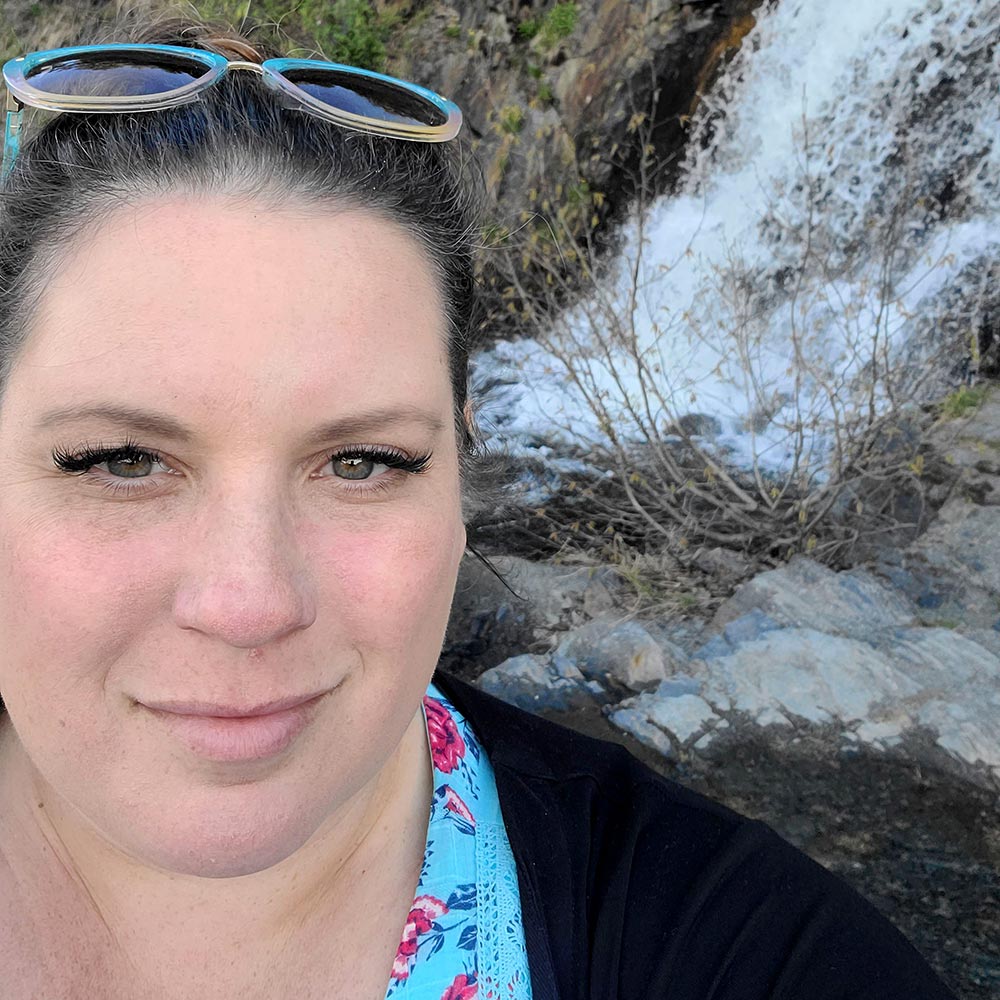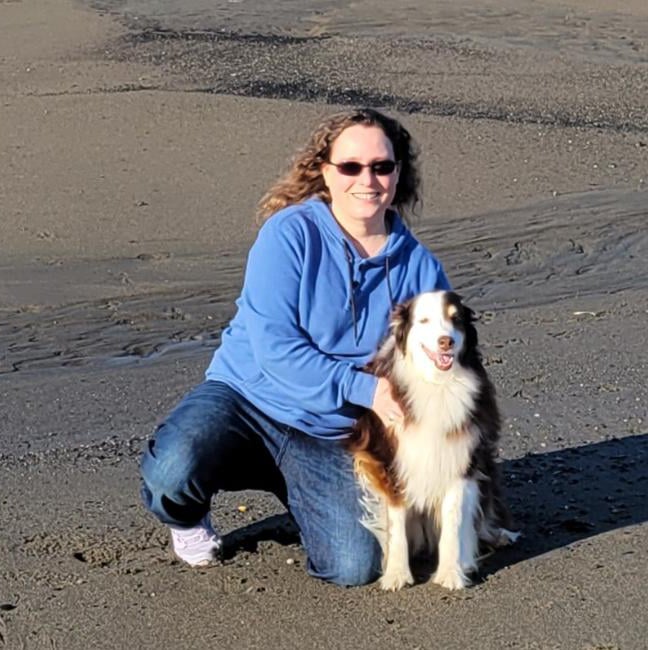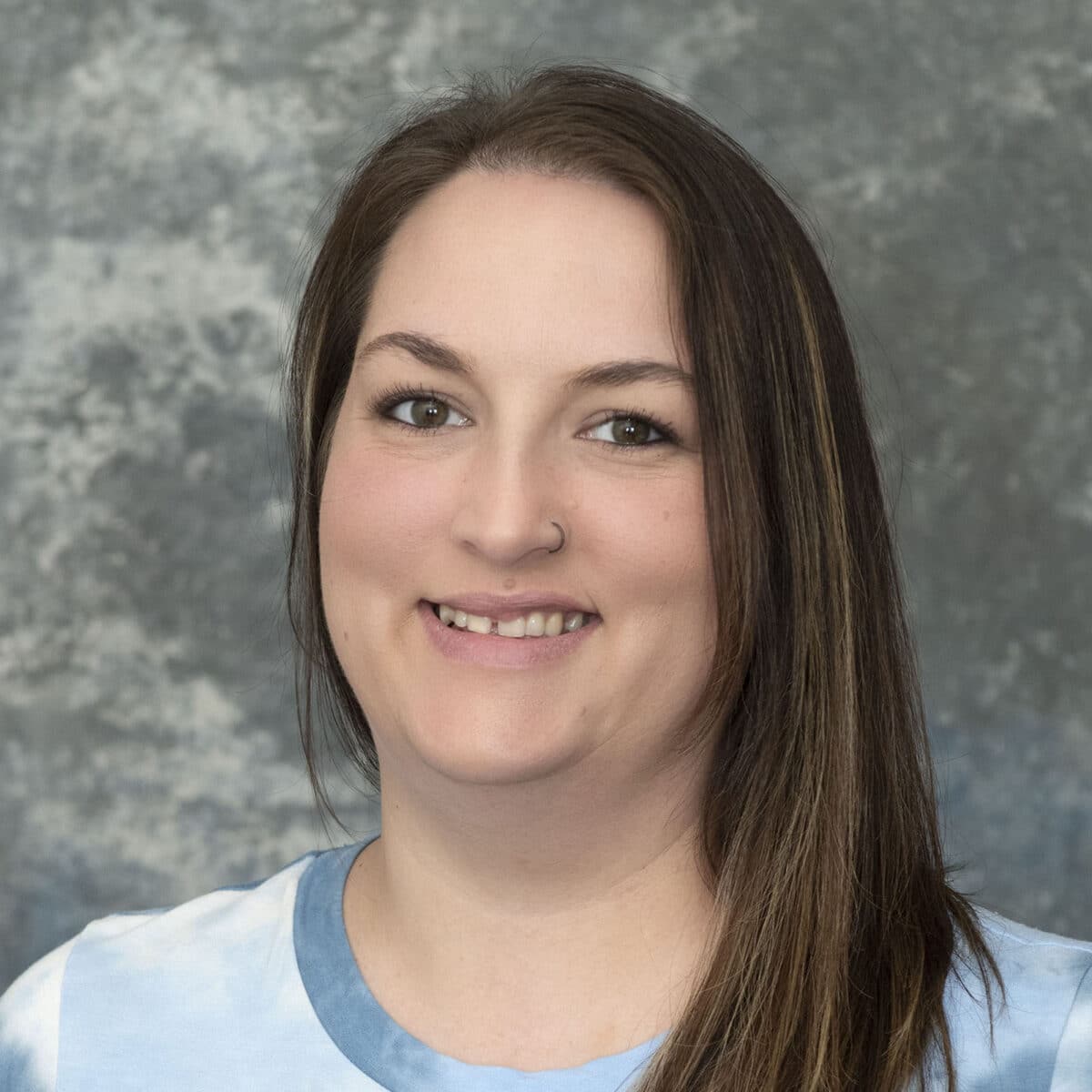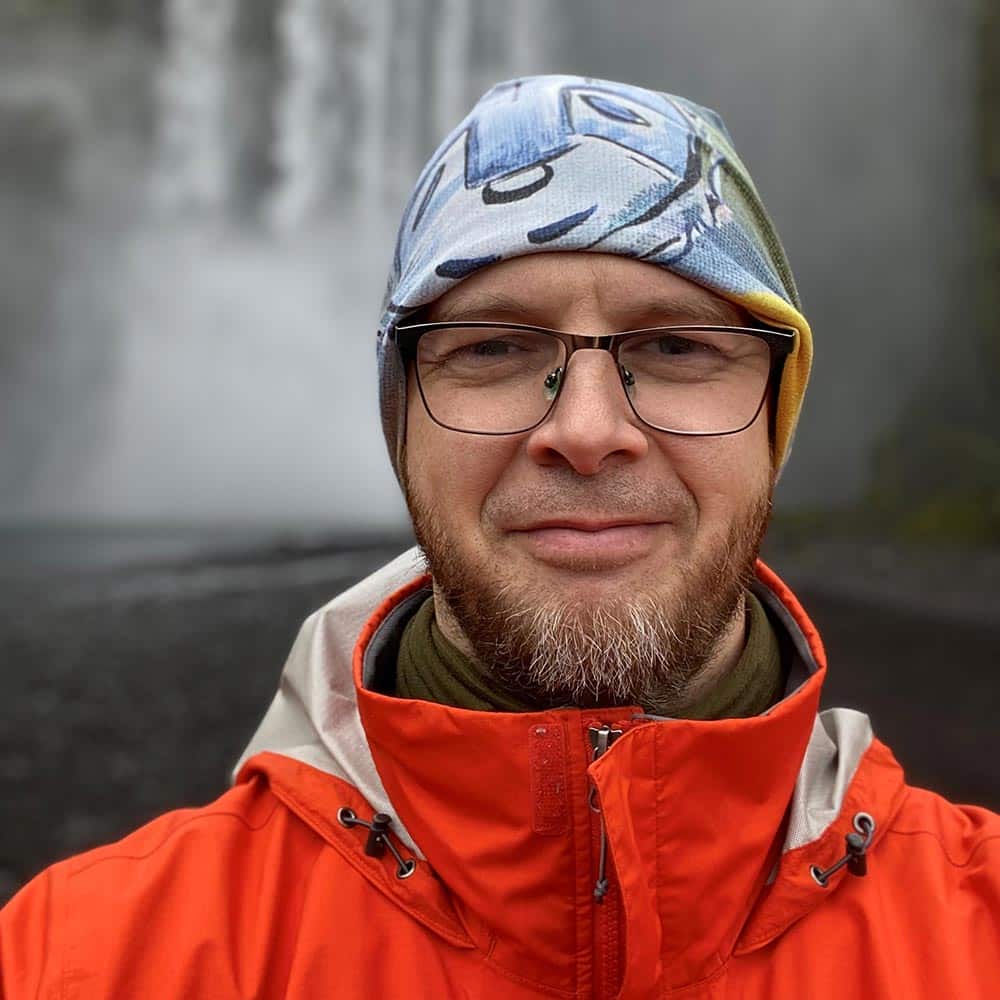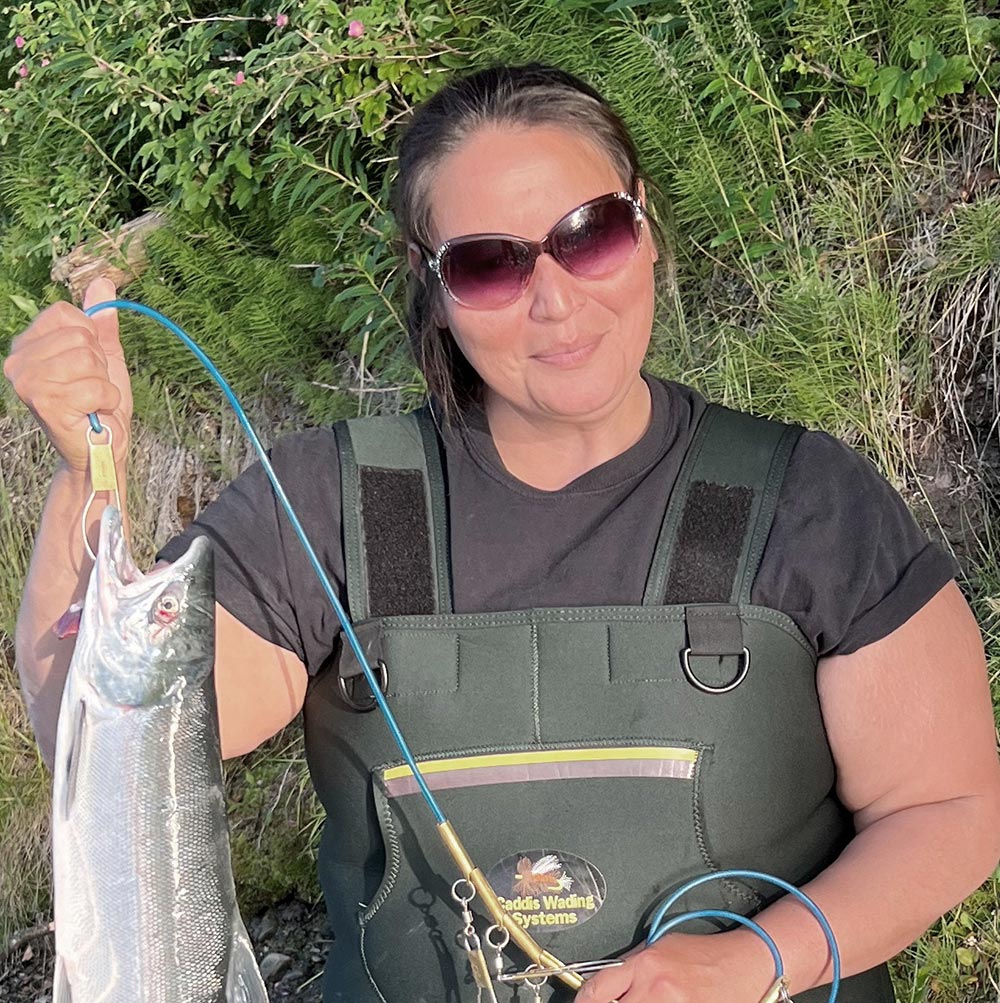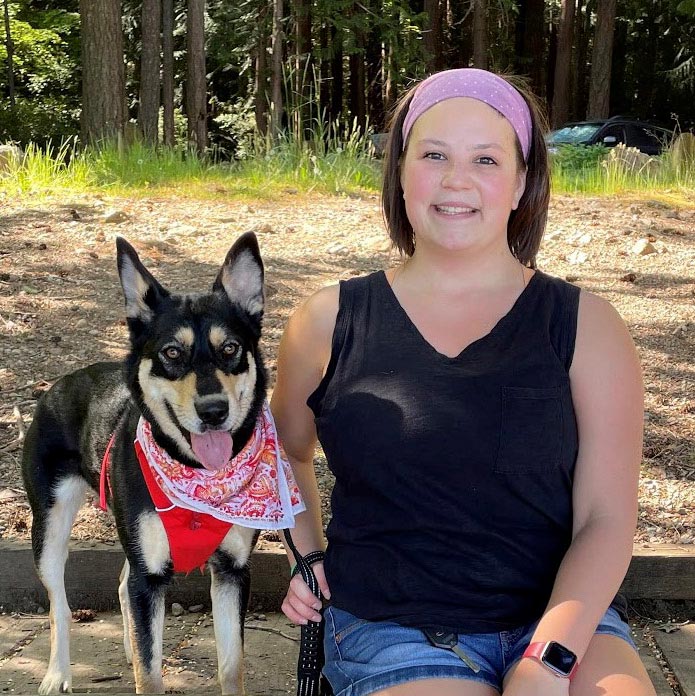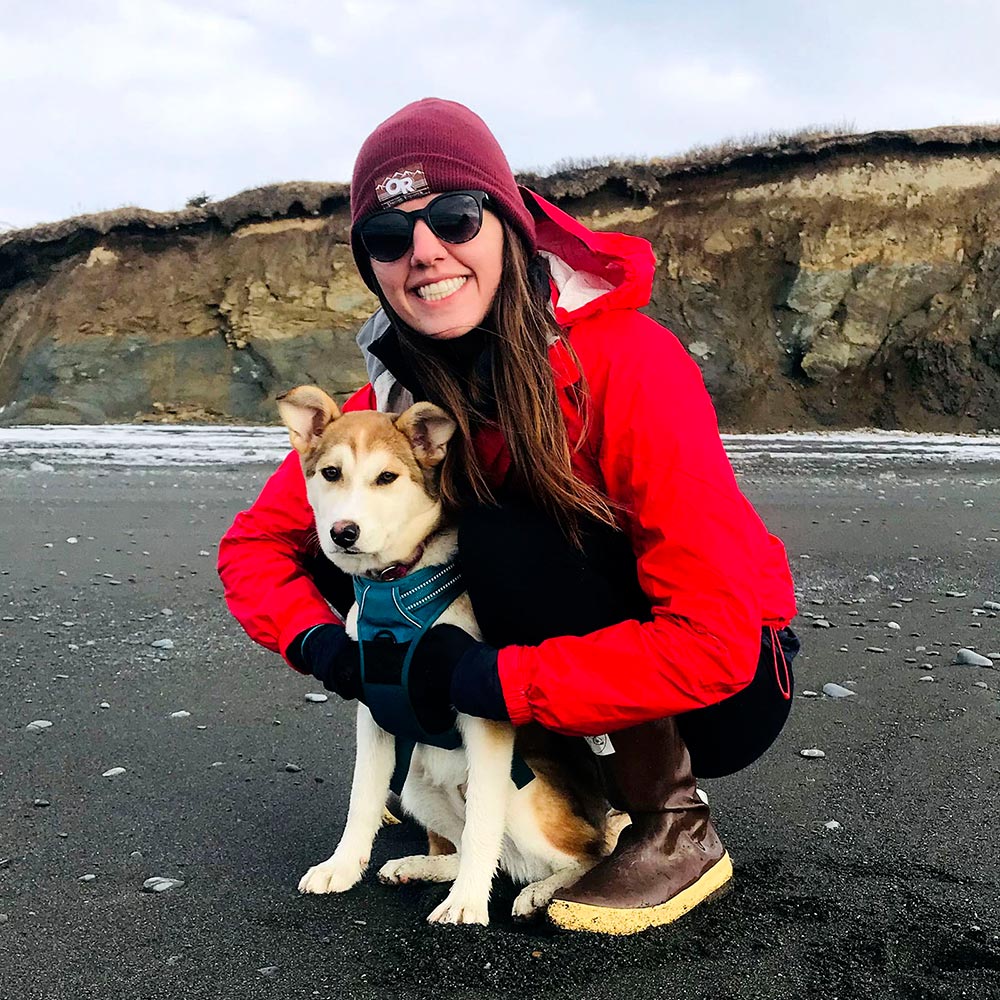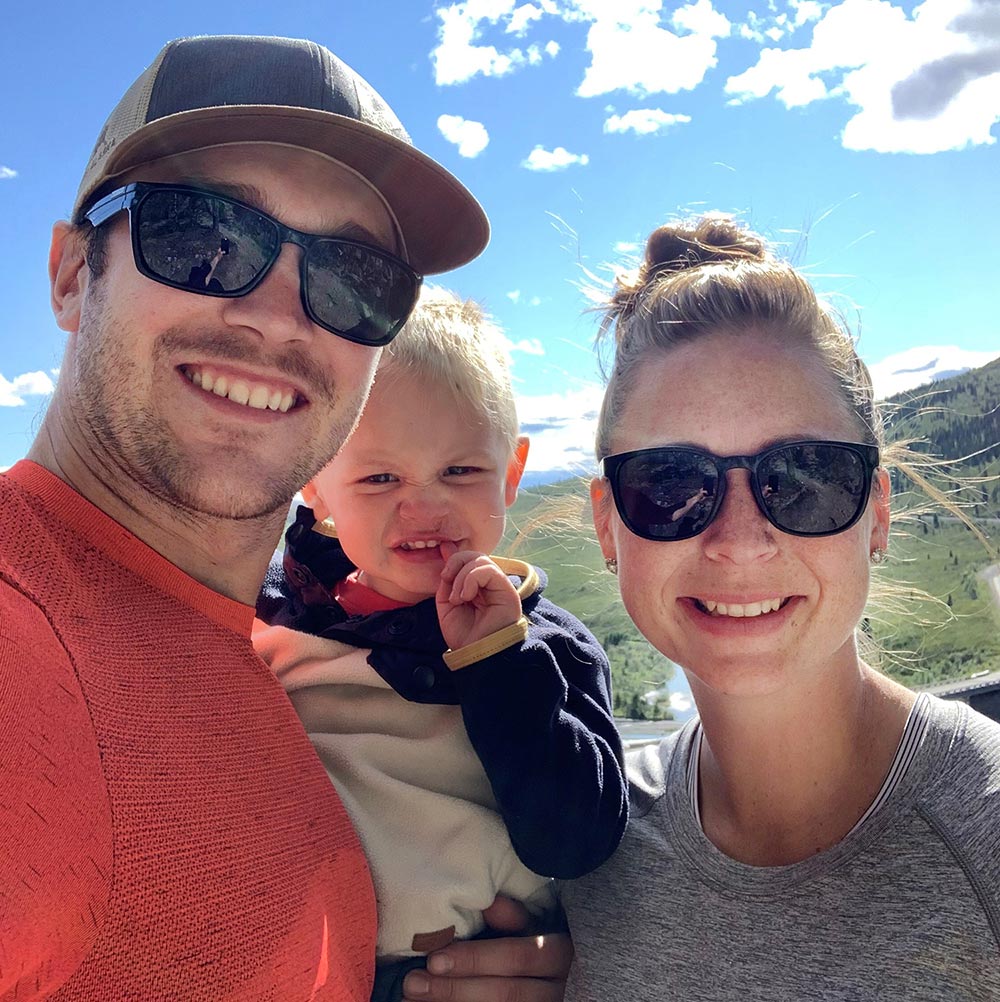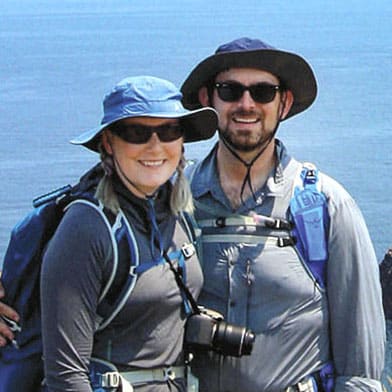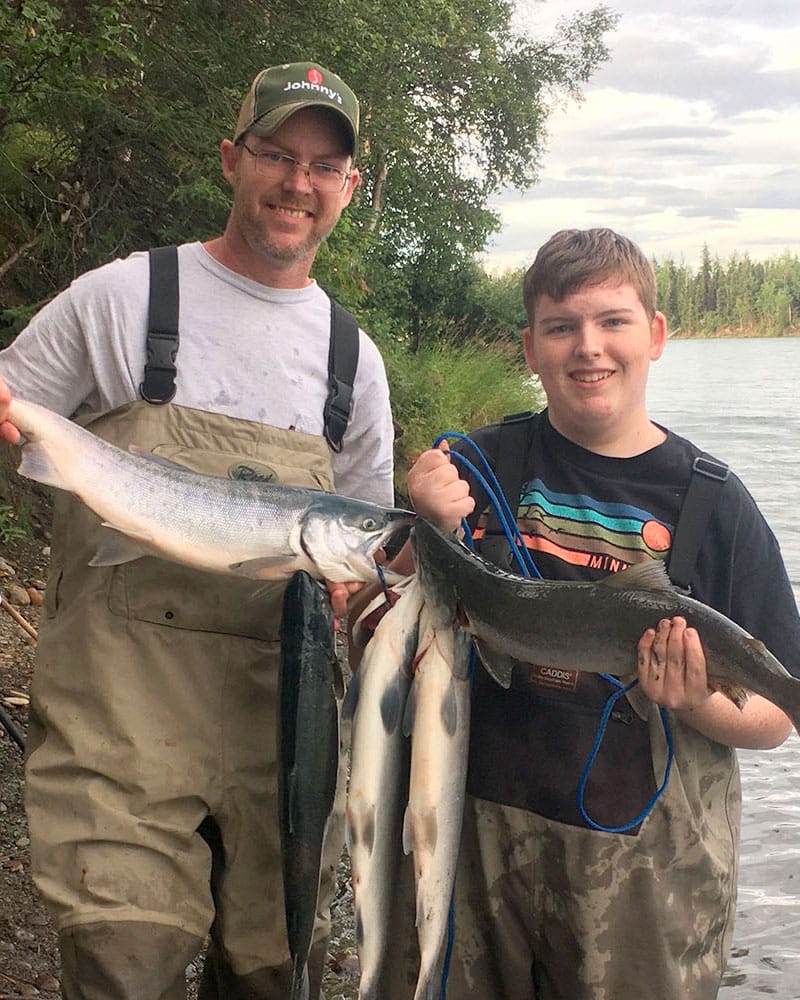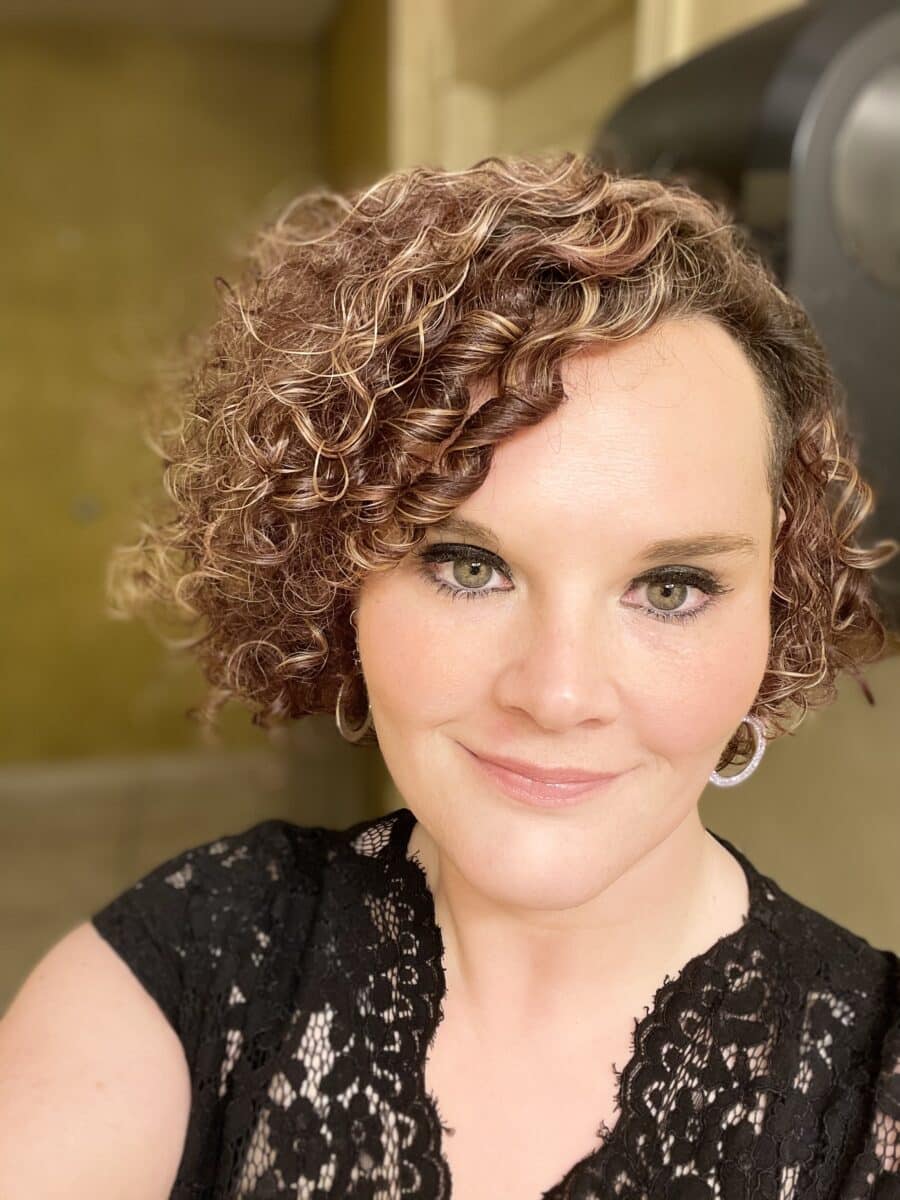Annual General Membership Meeting paves path to the future while recognizing the past
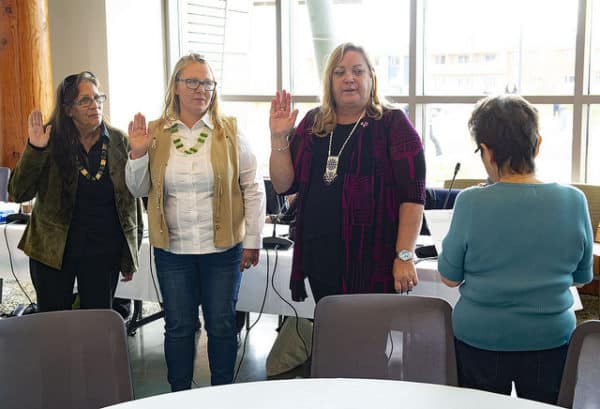
Mary Ann Mills, Jennifer Showalter Yeoman and Diana Zirul take the Oath of Office from Phyllis Bookey after they were elected to two-year terms on the Tribal Council during the Annual General Council Meeting at the Dena’ina Wellness Center.
Tribal Members re-elected two sitting Tribal Council Members, and elected a third candidate with past Tribal Council experience at Saturday’s Annual General Membership Meeting.
Incumbents Diana Zirul and Jennifer Showalter Yeoman were re-elected to serve two-year terms on the Tribal Council. Tribal Members also elected Mary Ann Mills, a current Tribal Court Judge and past Tribal Council member, to a two-year term.
Mills replaces longtime Council Member James O. Segura Sr., who received a warm ovation for his service after election results were announced.
Of the nine candidates on the ballot, Zirul received the most votes with 95. Mills had 94, and Showalter Yeoman received 87.
Segura received 80 votes; Elsie Maillelle received 64 votes; George Wright received 33 votes; James Coveyou received 22 votes; and Kenneth Paxton Oder received 9 votes. Rusty Swan withdrew his name from consideration.
Council Members Wayne D. Wilson Jr., Bernadine Atchison, Clinton Lageson and Liisia Blizzard were not up for re-election at Saturday’s meeting.
The new Council met Monday morning to select officers, and chose to keep the same slate for the coming year. Wilson will remain the Council Chairperson; Atchison is the Council Vice-Chairperson; Zirul will continue as Council Secretary; and Lageson will remain the Council Treasurer.
Saturday’s meeting opened with recognition of Adeline Chaffin and Alida Bayes, two of the signers of the Tribe’s original constitution in 1971. The two were presented with engraved glass plaques to commemorate the event.
“We really appreciate their commitment and the work they’ve done,” Atchison said.
In his opening remarks Saturday, Wilson noted some of the Tribe’s accomplishments over the past year. At the top of his list was paying off the Dena’ina Wellness Center loan 16 years early. Wilson also highlighted the change on the Tribe’s organizational chart, which creates two executive director positions, one for Tribal Administration, and one for Health Systems.
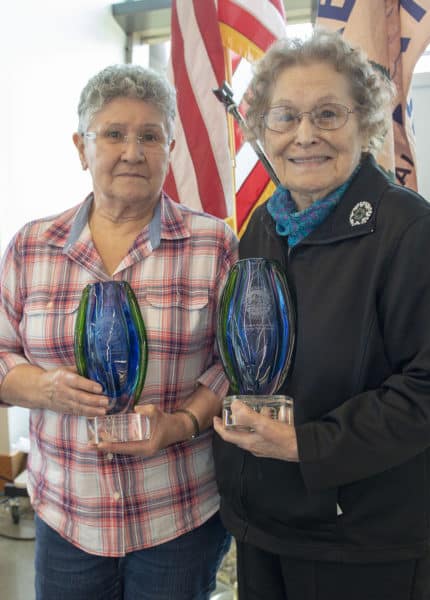
Saturday’s meeting opened with recognition of Adeline Chaffin and Alida Bayes, two of the signers of the Tribe’s original constitution in 1971.
Dawn Nelson was introduced as the Executive Director of Tribal Administration. Nelson served as Interim Executive Director since mid-July, and accepted the new position in September. The Council is very close to hiring an Executive Director of Health Systems as well.
Wilson also highlighted the Tribe’s efforts in education and career training. He said the Tribe funded 36 scholarships in the past year, and the Tribal Employment Rights Ordinance Commission has established five internships to provide professional training and mentorship for Tribal Members while they are also pursuing a degree.
“We have to fund our future,” Wilson said.
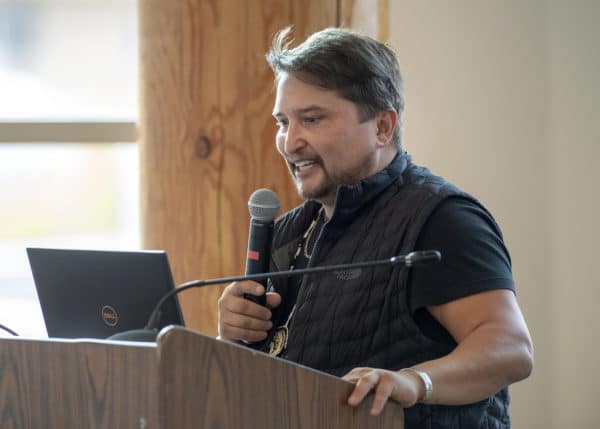
Tribal Council Chairperson Wayne D. Wilson Jr. delivers the Chairperson’s report. He highlighted accomplishments of the past year.
Wilson also said the Council has been working to make a difference in the local area as well as at the state and federal levels.
“Now when we go out, people know who we are,” Wilson said. “We’re trying to get out there to benefit our people as much as possible.”
Wilson said that Council Members sometimes had differing views about the best way to do that, “but we all come together when it matters.”
“I do believe we’re moving forward, and our future really does look bright,” Wilson said.
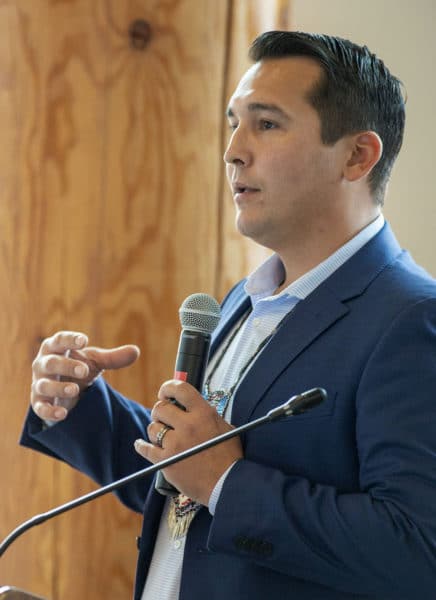
Tribal Council Treasurer Clinton Lageson delivers the Treasurer’s report. One of the year’s highlights was paying off the Dena’ina Wellness Center loan 16 years early.
In the Executive Director’s report, Nelson discussed the Master Plan being developed by the Council. The four-part plan includes a campus vision; education; health vision; and economic development. It brings back tribal-centered values, Nelson said.
In the Treasurer’s report, Lageson noted that the Council had passed a new fiscal policy to better manage the Tribe’s investments. Those investments create opportunity for Tribal Membership, he said.
During the comment period, Tribal Members raised concerns with time allotted at the Tribe’s educational fishery, and with Council Member’s compensation.
Tribal Harvest Supervisor Jakob Kooly said his priority for fishing the net is Tribal Elders, followed by Tribal Members and Tribal programs. It was noted that the poor return of sockeye salmon and the resulting fishery closure in August – when about half of the Tribe’s harvest usually comes to the net – made scheduling net time a challenge.
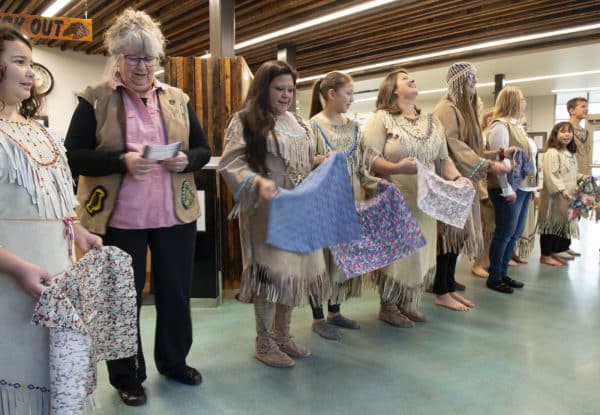
The Jabila’ina Dance Group and the Tribal Council enter the 2018 Annual General Council Meeting singing the “Potlatch Song of a Lonely Man”
Lageson said that the Council had enacted a policy limiting the Tribe’s programs from fishing in July.
Regarding concerns about travel expenses and stipends for Council Members, Wilson said that in the past year, Council Members had been very active. Additionally, he said that duties that might have gone to just one Council Member had been spread out among multiple members. He said he expected that the new Senior Executive Assistant would help Council Members better track their stipends.
Several Council Members said they didn’t take stipends for every meeting they attended, and that many hours are put in without compensation. In explaining Council Members’ presence on boards and committees, Zirul, the Council Secretary, said there are 60 Tribal Members on committees who aren’t Council Members.
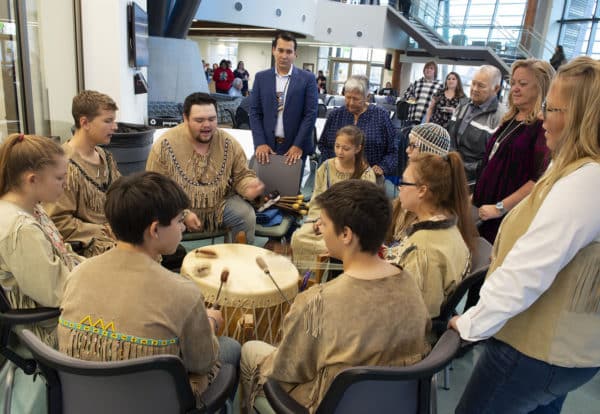
The Del Dumi Drummers perform at the opening of the 2018 Annual General Council Meeting on Oct. 6 at the Dena’ina Wellness Center.
In response to questions about how the compensation amount was set, Lageson said it was based on recommendations from REDW LLC, a consulting firm the Tribe has worked with. Lageson said the Tribe’s compensation was based on analysis of other tribes and Native organizations. Compared to other organizations, the Tribe’s compensation is on the lower end of the scale, he said.
Lageson said he would be willing to consider a cap on Council Member compensation in the future.
Atchison said it was important to attend tribal consultations and other meetings in person, which can result in significant grant awards or prevent infringement of the Tribe’s sovereignty.
“That’s my responsibility, to speak on behalf of the Tribe,” Atchison said. “… We need to protect our sovereignty, and we need to do that in person.”
Also at Saturday’s meeting, 21 people were approved for enrollment as new Tribal Members. Heading into the annual meeting, membership was 1,649. The newly enrolled Tribal Members bring the total membership to 1,670.

